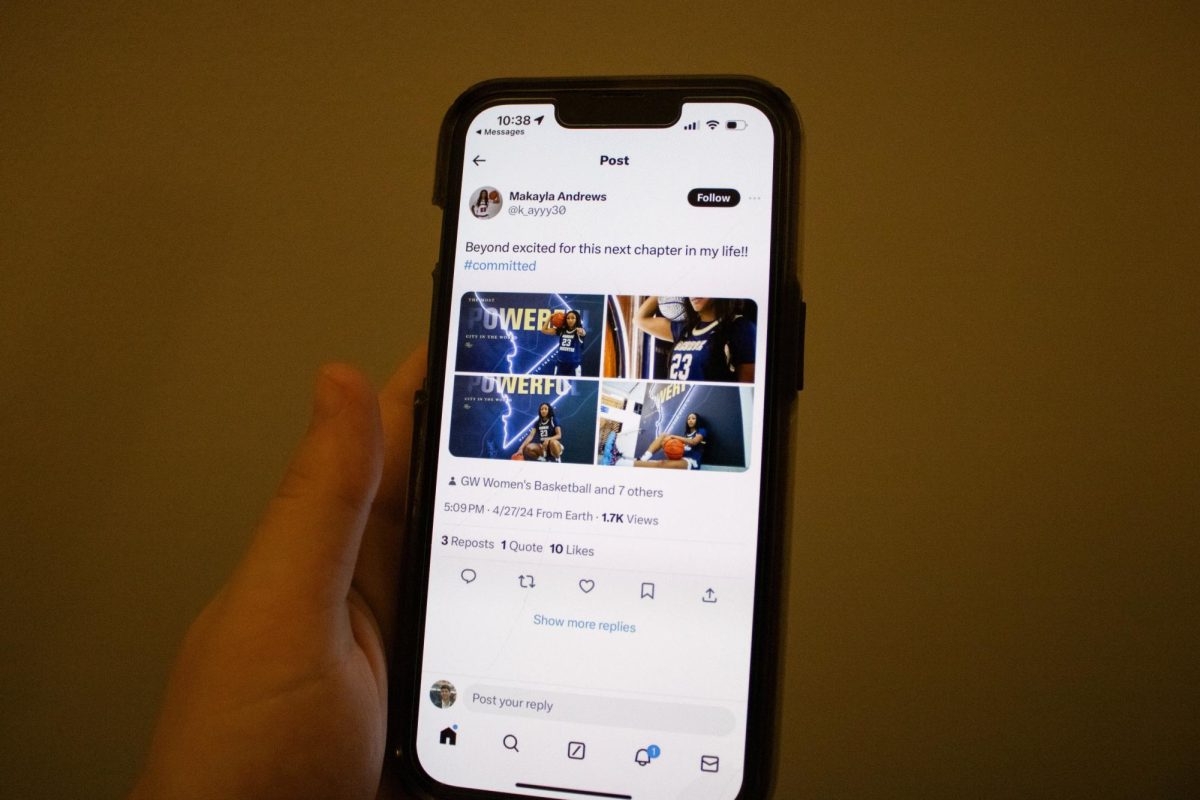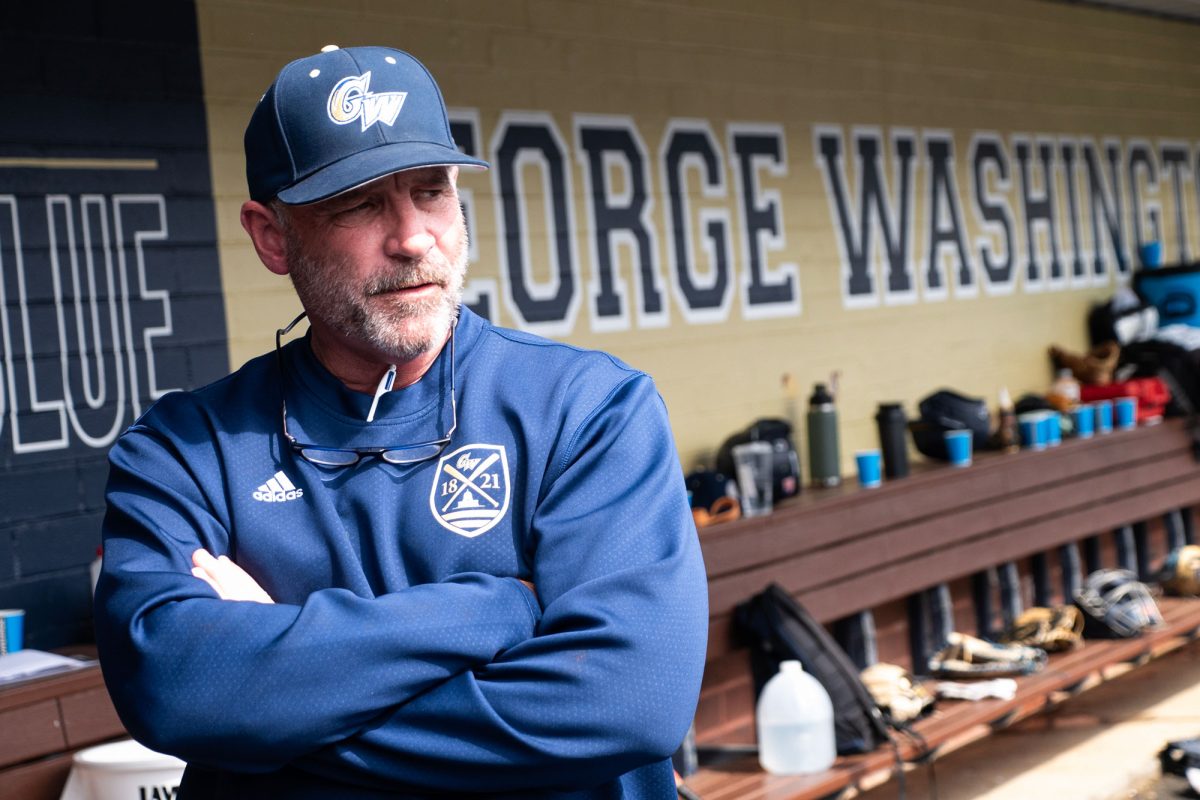Natalie Leger hated “the look.”
After four months of chemotherapy regimens during her junior year of high school – requiring a dozen different drugs and causing her hair to fall out – the glances of pity from friends and family were more bitter reminders that she had Hodgkin’s Lymphoma.
“They don’t know that they’re giving it to you, but it’s like a look of feeling sorry for you,” Leger, now a freshman, said. “That’s honestly one of the worst things. It’s a look of helplessness, almost because they can’t do anything about it.”
When players and fans look at Leger in the Smith Center now, they see a defensive specialist trying to capture enough service aces and receptions to help a women’s volleyball team transform into an Atlantic 10 upstart this season.
Leger, typically coming off the bench in her first year, has served as a real-life comeback story that has underpinned GW’s own inspiring season. The Colonials have won nine out of their last 11 games, marching toward a top spot in the A-10 tournament later this month.
During the preseason, in front of her new teammates and coaches, Leger used a team-building exercise as a platform to disclose the full history of her battle with Hodgkin’s Lymphoma – a rare form of cancer found mostly in young teenagers and older adults.
“I told them the complete story,” Leger said. “They were shocked, but they understood at that point why I work so hard day in and day out, and how I’m never going to be a person that’s going to give up on them, and am always going to be there to support everyone, because that’s what people gave me when I was at my lowest point.”
A jarring diagnosis
Leger learned of her diagnosis in January 2012 while competing on a club volleyball team in Pennsylvania. After several weeks of shaking off chest pains, thinking they were signs of fatigue, she felt a pang in her chest that prompted her to seek medical attention.
In a span of three days, Leger’s diagnosis progressed from a potential stress fracture, to an odd blur on the X-ray, until finally, it became clear in an MRI.
Follow-up tests revealed “a large mass of a bunch of small tumors,” in places including Leger’s chest and spleen. Hodgkin’s saw only 9,290 new cases in the United States in 2013, according to the American Cancer Society.
Still, Hodgkin’s is one of the more curable types of cancer, and as Leger said, “if you’re going to get cancer, that’s kind of the one you want to get,”
Over the next four months, Leger would go through an intense chemotherapy regimen that was split into four cycles, each cycle lasting three weeks. Leger remembers her first cycle being the worst, as her body was not used to the six-to-12-hour-long sessions the regimen entailed.
More distressing than the worried looks from her peers, though, was Leger’s inability to play the game she fell in love with in eighth grade. She had just come off of a career season at her high school in Long Island, where she led her team in almost every statistical category.
“Volleyball was always an outlet for me to release any type of emotion,” Leger said. “When that was taken away from me during a time when you would want to release the most amount of emotion, that was probably the most difficult thing about the entire process.”
From cancer patient to recruit
Within the first two months of her treatment, the strict regimen had paid off – Leger was cancer free. The mass was completely gone, and, according to doctors, unlikely to return.
The day after her last chemo session, Leger was back on the court playing in a volleyball summer league. She struggled initially, as the treatment severely weakened her body.
“That was kind of the start of realizing how slow the process was going to be for getting back and trying not to get frustrated with everything,” Leger said.
Being sidelined after the diagnosis and recovery, Leger lost out on key time to showcase her abilities to college coaches. Despite her team-leading numbers on a county level in the often-ignored Long Island volleyball scene, Leger struggled to capture the attention of college programs at a national level, and had yet to commit to a school.
For her second-to-last tournament before the end of the season, GW women’s volleyball assistant coach Brian Gerwig traveled to see Leger play. After discussions with head coach Amanda Ault and talks with Leger, Ault offered her a chance to walk on to the team.
“She went from being somebody that was good on the floor, to someone that was just all over the place and had this attitude and this presence about her that I hadn’t seen all day,” Gerwig said. “And I called [Ault] and I said, ‘Hey, this is a kid, I don’t know what she’s got, I can’t put a finger on it, but she’s got it. She’s a really special kid.'”
Leger said she was “completely overjoyed” by the offer, and even brought to tears.
As a Division I athlete, Leger sees herself as an advocate and role model who wants to show those in her situation that they can beat the disease – a message Leger feels she missed during her experience.
“I think that she has a story to tell,” Ault said. “She wants [Hodgkin’s] to be better for that next person. She’s gone through it and she knows how it affects not only herself, but her family, the people around her. I think she wants to be a part of change for that.”







